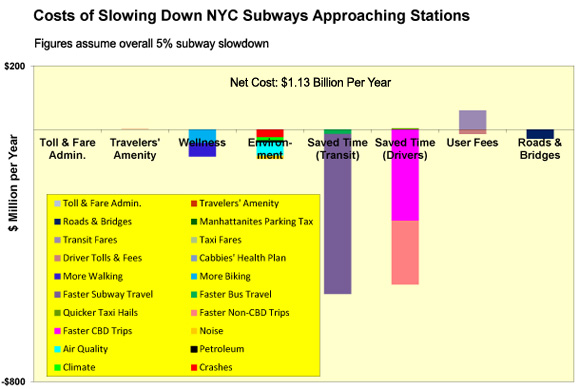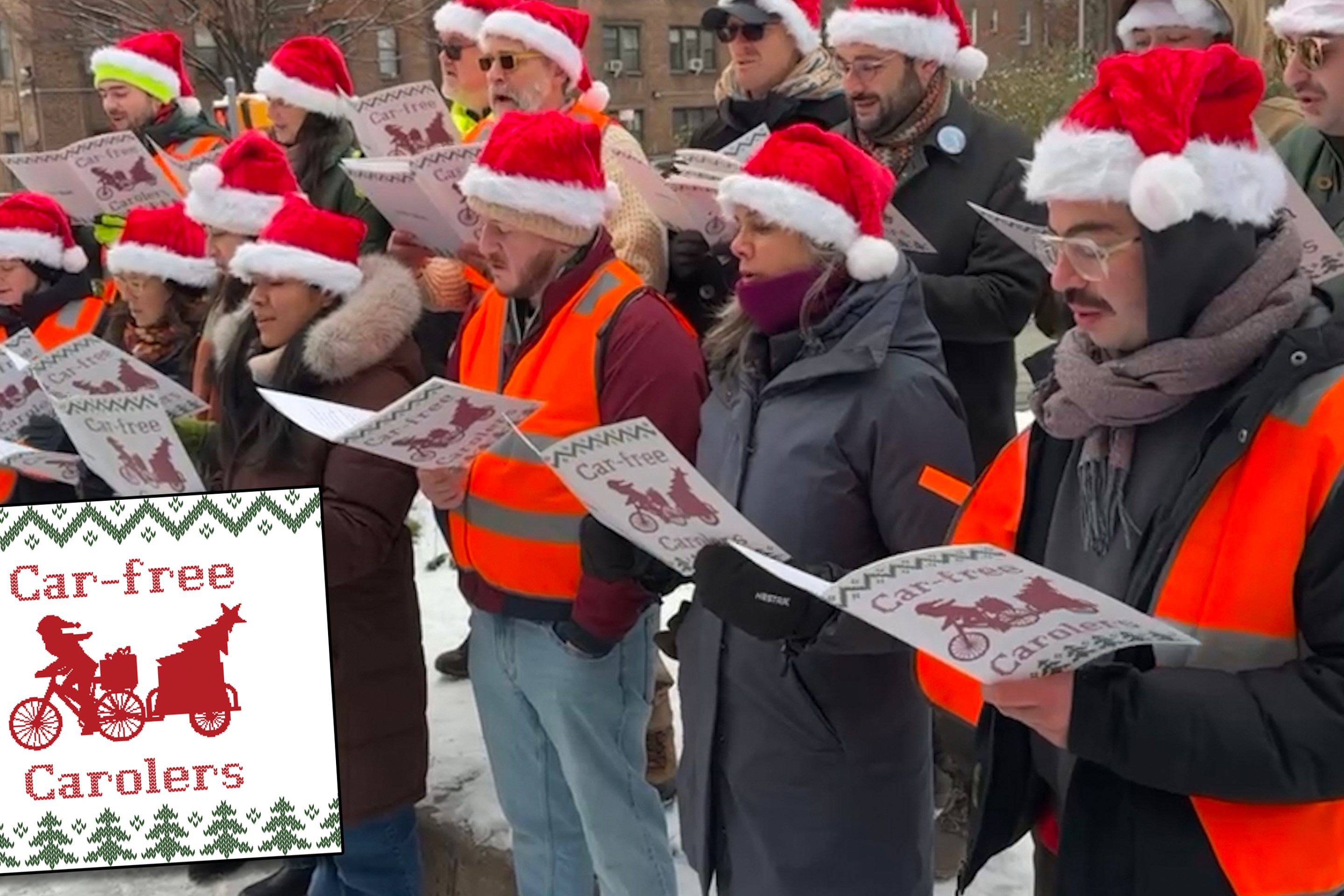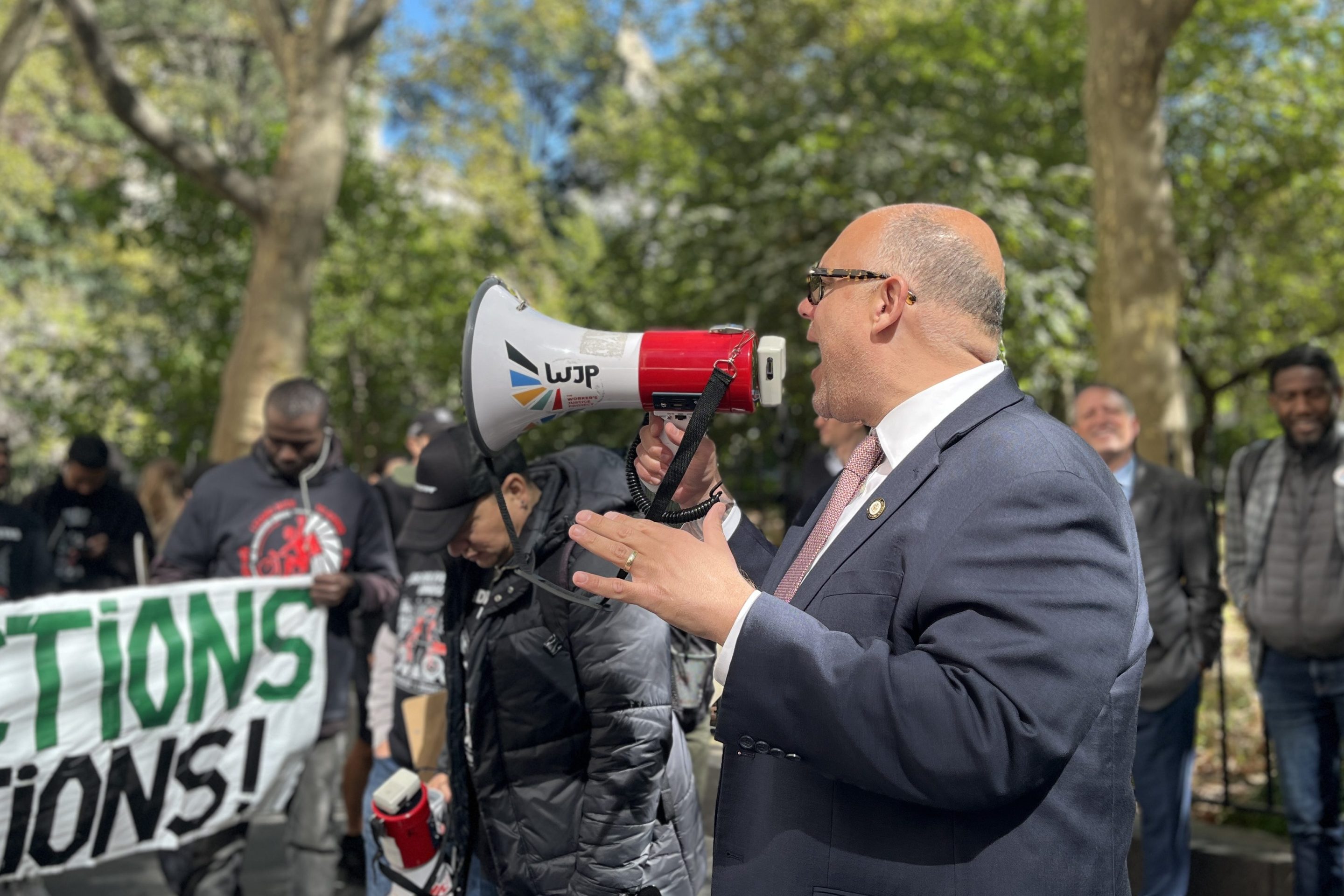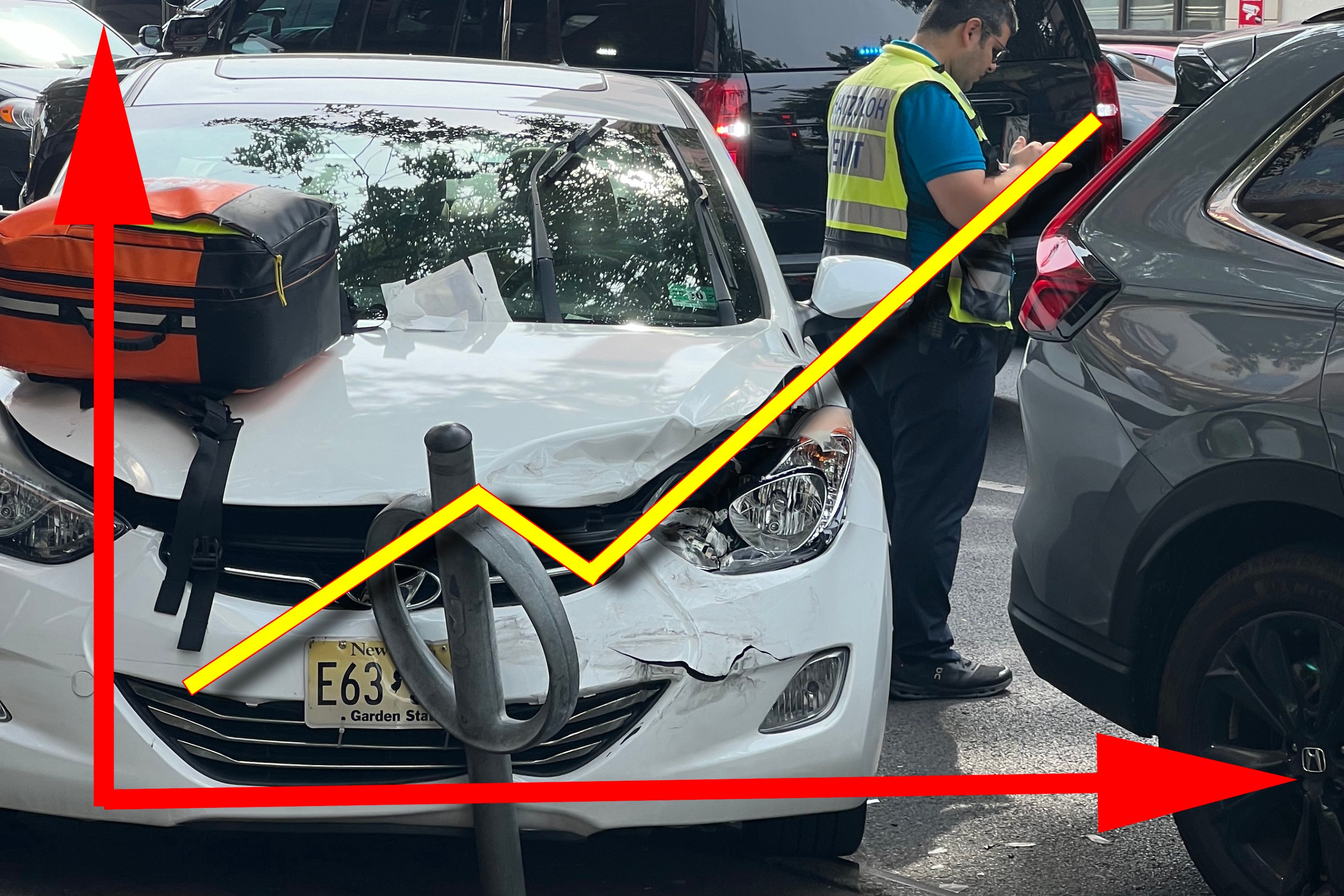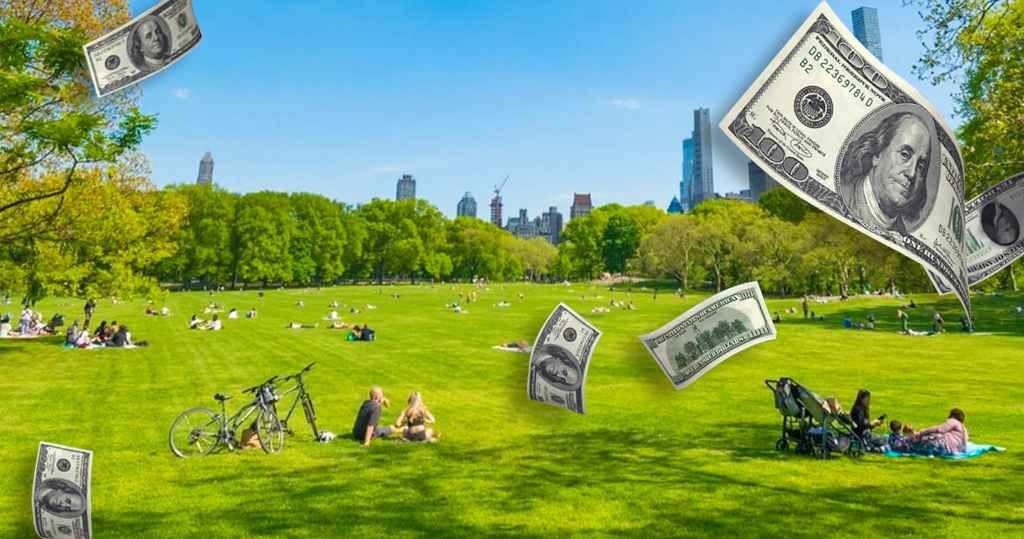Following the recent deaths of two subway passengers who were pushed onto tracks, TWU Local 100 is urging operators to slash train speeds as they enter stations, the New York Times reported yesterday. A TWU flier, which you can view here, advises operators that “Preventing a [run-over], and saving yourself the emotional trauma and potential loss of income that go with it, is worth a few extra minutes on your trip.”
There’s no question that watching death unfold through the train windshield and being powerless to avert it can result in trauma and guilt. But the proposed remedy in the TWU flier could be surprisingly costly. Based on calculations from my Balanced Transportation Analyzer spreadsheet model [PDF], if those “extra few minutes” were actually applied as a preventive measure to every subway trip, the lost time could aggregate to millions of hours per year for straphangers, not to mention more street and highway gridlock as the slowdown leads some commuters to drive instead of taking the train.
The city’s subways account for 1.6-1.7 billion passenger-trips a year. Here’s a rough sketch of the leading consequences from slowing all of them by an average of five percent:
- A 2.4 percent drop in subway ridership, as slower service discourages “marginal” train trips
- A nearly 4 percent rise in private auto trips into the Manhattan Central Business District, causing a 4 percent drop in average vehicle speeds there
- 1 percent fewer people coming to the CBD — a net decrease of 34,000 each day
- 55 million hours a year sacrificed to slower travel (35 million for transit users, 20 million for vehicle users), collectively costing them $1 billion a year, based on values of travel time
- A $60 million a year revenue hit to NYC Transit, or a $35 million net loss for the MTA after factoring in higher throughput on tolled bridges and tunnels
These figures do not reflect higher personnel and equipment costs to run additional trains to make up for the slowdown. Nor do they capture macro-economic effects of reduced business from the decline in CBD activity. Even so, they’re not chicken-feed.
Analytically, the key driver of these impacts is an assumed “time-elasticity” for transit trips of negative 0.5. This means that increases in trip duration translate into half-as-great decreases in the volume of trips. Thus, an assumed 5 percent lengthening of the average subway trip (which is how I represented the “extra few minutes” urged in the TWU leaflet) would lead to a 2.5 percent shrinkage in subway use. (The shrinkage settles out at 2.4 percent because the increase in CBD gridlock eventually “attracts back” a few of the trips that leave the subways due to slower service.)
To be sure, not every “lost” subway trip resurfaces as a car trip. Some non-work journeys simply disappear. Carpooling, though paltry, also cuts into a 1-for-1 substitution. So do buses and cabs, though the worsening of traffic due to greater auto use leads to predicted overall losses to both modes, albeit small. Even cycling might not grow, for the same reason. Still, the scale of subway use is so vast that even with these caveats, a minor (2.4 percent) decline still precipitates a proportionally greater (3.9 percent) increase in car trips to the CBD.
It’s not clear how many of the approximately 50 annual average subway-track deaths could be averted through a systemic subway slowdown anyway. Most of the deaths are suicides, and there’s little reason to think that fewer people will jump into the path of a 10 mph train than a 30 mph one. Still, transit operators deserve better than the three days off they’re granted after witnessing a death, not to mention the absence of any time off for most of the 100 other “minor” cases each year, as the Times reports.
Think of it this way: If each of the 150 track incidents a year led to one week off for one train operator, the cost to NYC Transit would be $300,000 a year (based roughly on fully loaded salaries of $100,000 a year). That’s 99 percent less than the $35 million I estimate a 5 percent slowdown would cost the authority in lost fares alone.
Subway track incidents need lasting and humane solutions that don’t undermine the efficiency of the city’s vital mass transit system. An across-the-board slowdown in train operation doesn’t appear to be one of them.
